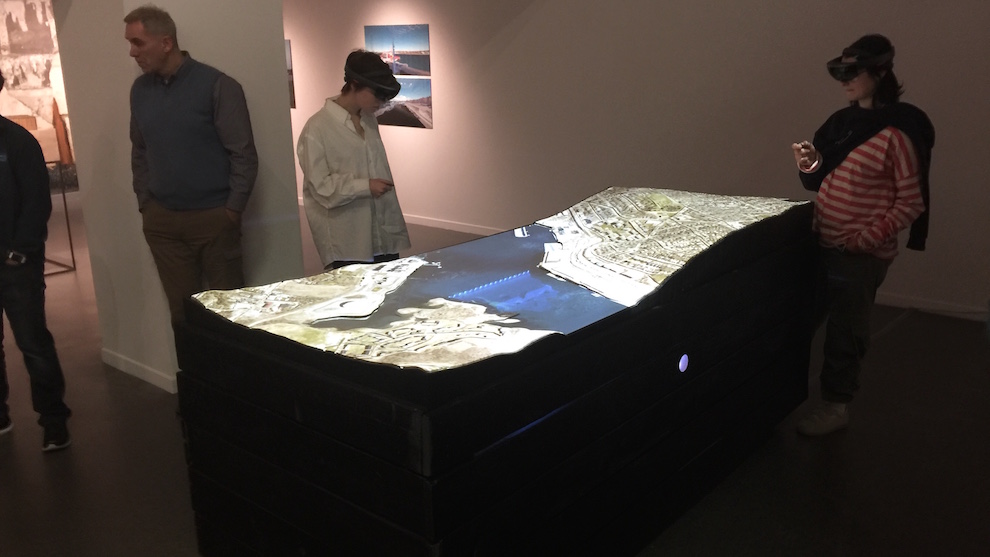Tech and History
Using augmented reality to remember the Halifax Explosion
A collaboration with computer scientists produces an educational interactive exhibit

caption
Two gallery visitors use augmented reality headsets to explore the site of the Halifax Explosion.
caption
Two gallery visitors use augmented reality headsets to explore the site of the Halifax Explosion.A research group is using tech to tell stories of the Halifax Explosion as the 100th anniversary of the disaster approaches.
The Narratives in Space+Time Society (NiS+TS) and the Graphics and Experiential Media (GEM) Lab from Dalhousie University’s faculty of computer science have collaborated on a project that allows people to explore Halifax through augmented reality.
Together with Dalhousie’s Faculty of Architecture and Planning, they have created The Psychogeographer’s Table, an exhibit at the Dalhousie Art Gallery.
Derek Reilly, a member of the GEMLab, says The Psychogeographer’s Table explores “narratives weaving through the spaces” ravaged by the Explosion. Related stories
The tabletop is a 3D map of the harbour area, with geographical details projected onto it from above. It’s filled with artifacts retrieved from areas devastated by the Explosion, which can be seen by pulling out drawers, or by looking down through the glass in the model on the tabletop.

caption
The Psychogeographers Table has drawers filled with artifacts from the Explosion.The GEMLab programmed the map so that gallery visitors can wear an augmented reality (AR) headset and peek inside buildings that were affected to see views from the buildings or historical photos.
Reilly says augmented reality is “a way of using the map as a tool for exploring in a way that we maybe couldn’t” otherwise.
The exhibit will be on display until Dec. 17. Until then, the GEMLab will continue to work with NiS+TS to improve the display.
“What we’re interested in is whether and how you can share that experience with the people that are with you,” says Reilly.
They plan to set up another projection on an adjacent wall so that visitors who are not wearing the AR headset can see information about the buildings the AR users are exploring.
Drifts app
Along with The Psychogeographer’s Table, NiS+TS has been organizing public art walks around neighbourhoods affected by the Explosion since 2014. During these events participants are encouraged to take part in activities related to their route, and think about the Explosion’s impact.
Mary Elizabeth Luka, a member of NiS+TS, says “people on the walk start talking to each other and they talk about their own stories and what they know about the Explosion.”
NiS+TS has also partnered with Halifax-based tech start-up MindSea to create an app, Drifts. Drifts maps out walking routes and allows users to contribute to a visual archive of scenes on each route.
Today, NiS+TS will unveil a new route called “Towards Pier 6,” which will lead users through the former North End community of Richmond to the harbour front where the Explosion occurred.
The GEMLab is hoping to integrate the app’s routes and the digital contributions of users into The Psychogeographers Table.
Luka says that NiS+TS wants people to“dig down and find the untold stories” of the Explosion, adding to what they already know, and relate them to the Halifax of today. The use of AR helps bridge this gap.
“That tension of past and present is what’s really interesting,” she says. “Augmented reality becomes a navigation between a real space and an imagined space.”
NiS+TS will host more public art walks on Nov. 19 and on Dec. 3 before the 100th anniversary of the Explosion on Dec. 6.
